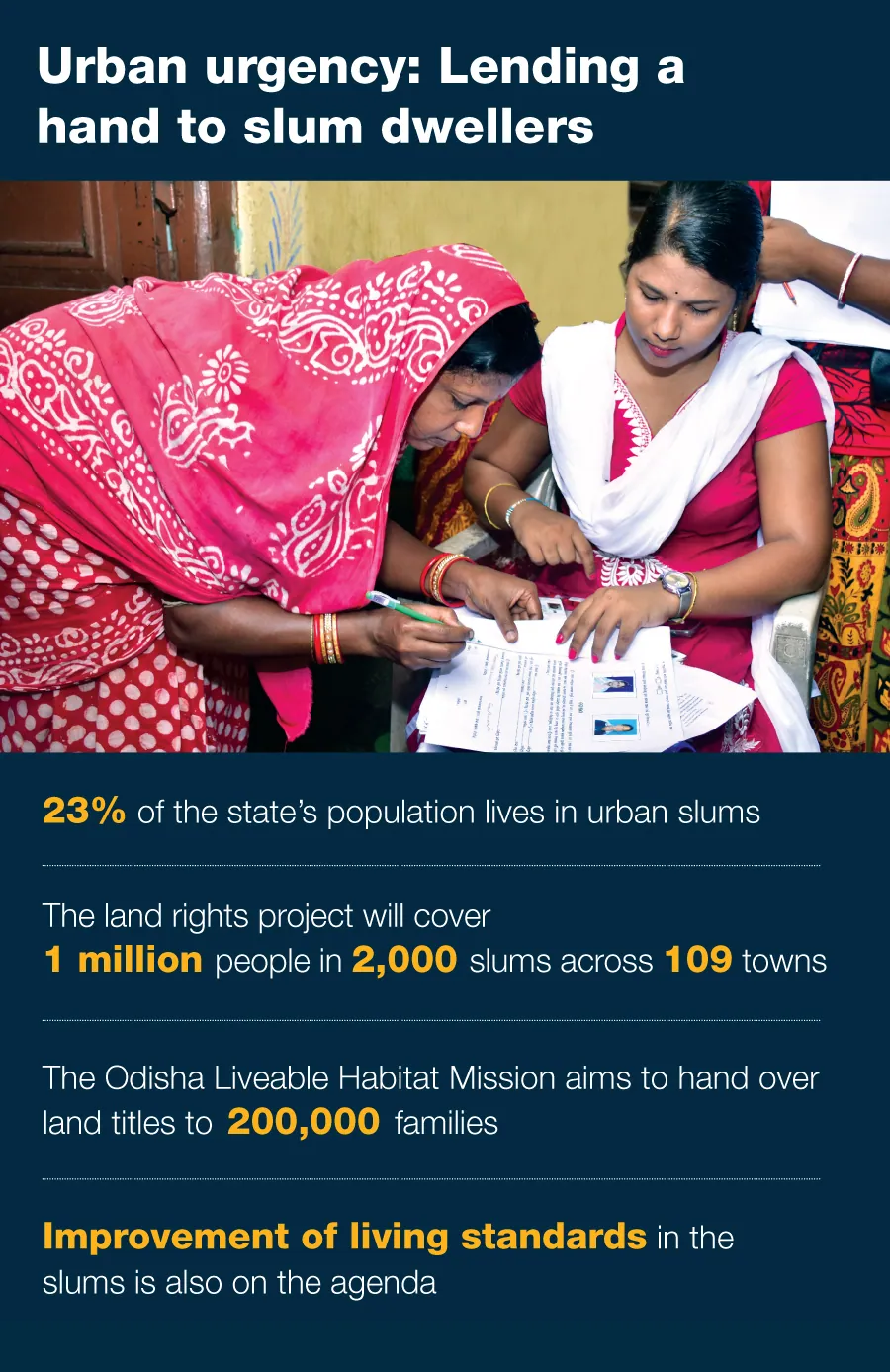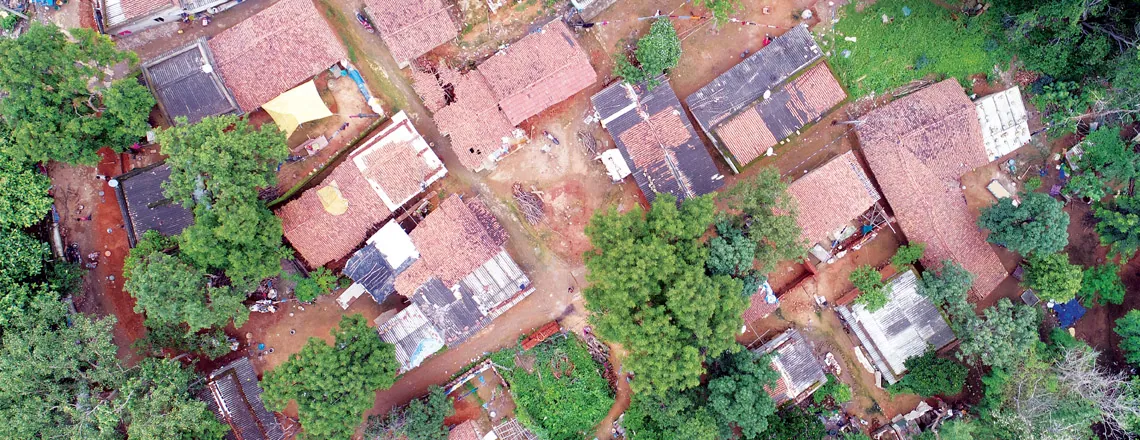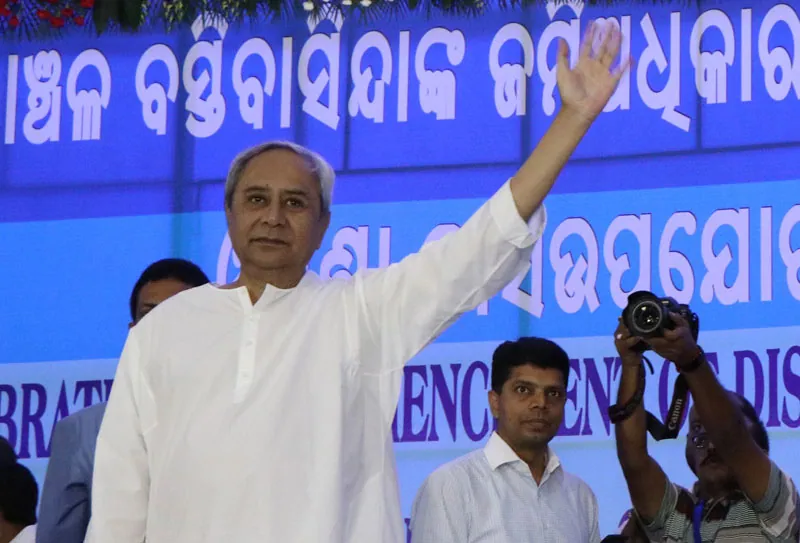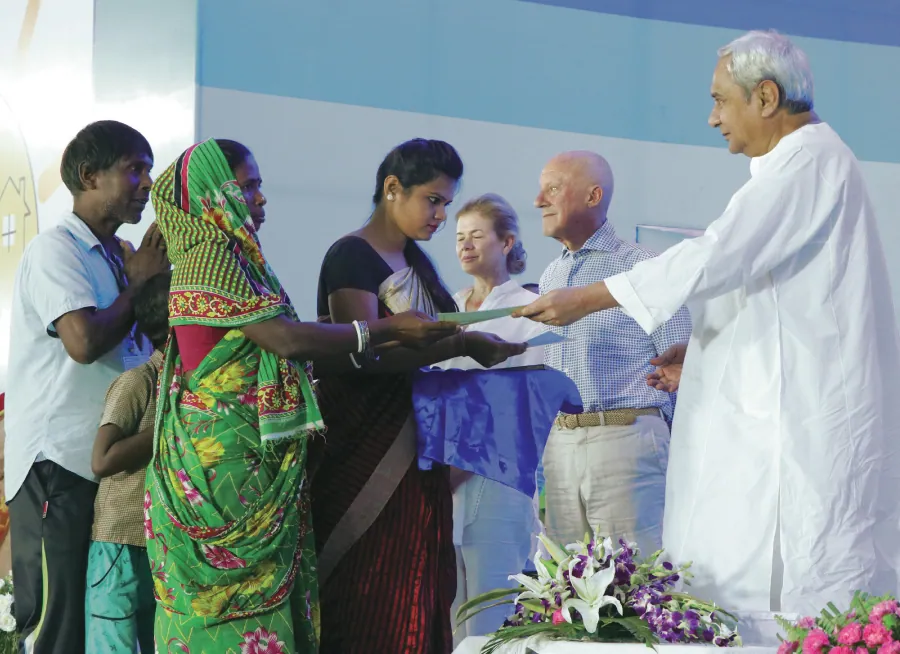Homes ahoy
Drones are the unlikely allies in a programme that employs eye-in-the-sky technology to help provide land rights to 1 million slum dwellers in Odisha’s urban centres
Residents of Gopalpur in the Ganjam district of Odisha scan the skies regularly as they watch out for the cyclonic storms that frequently hit this coastal village and, almost as frequently, leave havoc in their wake. But what they spotted recently was astonishing indeed — unidentified flying objects.
The objects were drones deployed under a programme — jointly undertaken by the Government of Odisha and the Tata Trusts — to conduct an aerial survey of nine urban local bodies of Ganjam and Puri districts. This survey of slums by unmanned aerial vehicles is part of the Tata Trusts engagement in a pioneering urban rehabilitation project being implemented by the Odisha government.
Urban rehabilitation is a critical move for Odisha, where 23% of the population lives in urban slums. The first step in the ambitious urban transformation initiative was taken in August 2017, when the state legislature passed the Odisha Land Rights to Slum Dwellers Act, which will enable the government to execute what it says is the world’s largest ‘slum land titling’ initiative.
This project is an urgently required urban necessity. It emerged from the realisation that slum dwellers are in many ways the lifeline of the state’s urban centres and that Odisha cannot become better without them being uplifted. It began in August 2017 with Chief Minister Naveen Patnaik announcing his cabinet’s decision to provide land rights to slum dwellers. He described it as an important part of his government’s effort to bring about growth that is inclusive and empowering.
The habitat mission — also known as the Jaaga mission — aims to hand over land titles to the largest-ever group of such beneficiaries: about 200,000 households in all. The mission covers not just housing but also aims to improve urban living standards by providing piped water, individual toilets, good roads, street lighting and common facilities like parks and playgrounds.
G Mathi Vathanan, Odisha’s commissioner-cum-secretary, housing and urban development, says that the government realised that merely giving land rights to slum dwellers would not improve their lives. “We conceptualised the Jaaga mission to convert existing slums into liveable habitats,” he says.
The land rights piece in the mission covers 1 million people living in 2,000 slums across 109 towns of the state. Covering this area through manual surveys would have taken years. This is where the Tata Trusts stepped in with a technology solution.
“We identified technical agencies and guided them to deploy drones to conduct aerial surveys and map the slums,” says Shishir Dash, who leads the urban habitat project for the Trusts in Odisha. Deploying a dozen drones helped speed up the survey process. The outcome: Odisha will be issuing 200,000 land titles by the end of 2018.
The government has provided ![]() 1 billion for the mission in the current year’s budget. It has also invested about
1 billion for the mission in the current year’s budget. It has also invested about ![]() 4 billion in the Atal Mission for Rejuvenation and Urban Transformation to ensure that every slum household will get two piped water connections. And there’s Awaas, launched in 2015, which aims to enable housing for all and provide financial assistance of
4 billion in the Atal Mission for Rejuvenation and Urban Transformation to ensure that every slum household will get two piped water connections. And there’s Awaas, launched in 2015, which aims to enable housing for all and provide financial assistance of ![]() 200,000 per beneficiary.
200,000 per beneficiary.
It’s going to be tough
The scale of the challenge that lies before the state administration is monumental. Of the 2,000 slums covered by the mission, about 1,000 come under five municipal corporations and the rest are spread across 100 urban local bodies. The Odisha government decided to speed up the survey by using technology and allocated the technology and capacity building tasks to the Trusts.

“We provided rigorous training for government officials and volunteers,” adds Mr Dash. “We gave them tablets and developed applications to collect information.” The Tata Trusts are partnering international organisations like the Norman Foster Foundation, the Omidyar Network and Cadasta for technological support.
This is a programme deliberately designed to not bring beneficiaries to government offices. It adopts a community-based approach with the focus on doorstep delivery of services. NGO partners will visit the slums and collect the required household information. “We are happy that in the pilot phase, covering nine urban local bodies consisting of 47 slums in two districts, about 2,000 land rights certificates have been distributed without the slum dwellers visiting any government offices even once,” points out Sangramjit Nayak, director, municipality administration.
The project has introduced new ways of working. For instance, a WhatsApp group was formed and it includes everyone from the urban development commissioner to collectors of all the 30 districts of the state, executive officers, NGO representatives and volunteers.
Other well-known institutions are also associated with the Trusts in implementing this pilot programme for the Jaaga mission. They include the Indian Institute for Human Settlement, the Tata Institute of Social Sciences, the Centre for Urban and Regional Excellence and about 26 local NGOs.
UPDATE
The Jaaga mission has provided land rights to more than 100,000 households, with 550+ slums being transformed into liveable habitats. The programme has won two World Habitat Awards and the India Geospatial Award and is now being managed by the state government. It has been scaled up, in partnership with the Tata Steel Foundation, to cover five municipal corporations in Odisha.
Shikha Srivastava, head, urban habitat and migration with the Tata Trusts, points out that this project will be a blueprint not only for other similar ones in India but also for other parts of Asia. “The basic premise of the project is to give ownership to communities, empowering them and making them partners in the development process,” she says.
The challenge has been in meeting the expectations of our people within a stipulated time period.”


